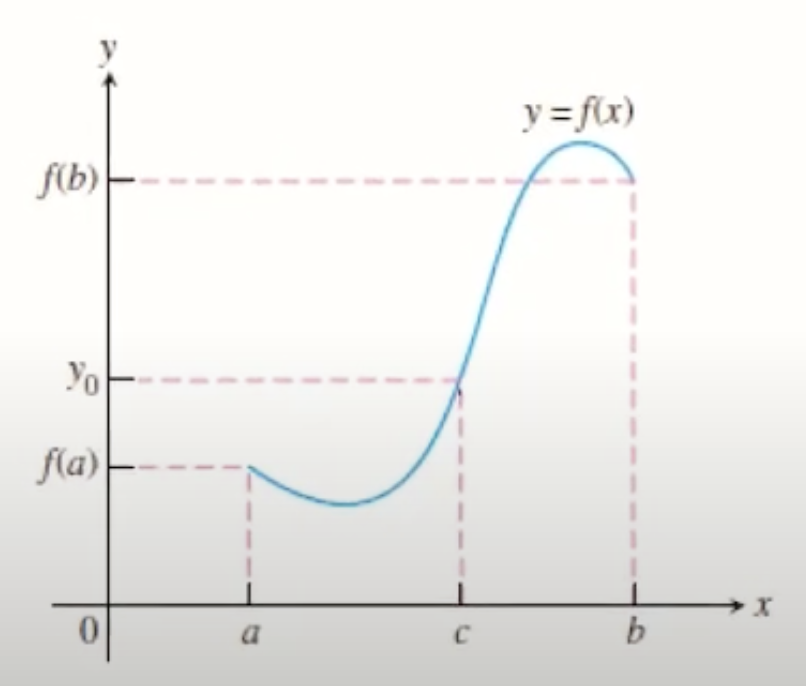The Intermediate Value Theorem
#calc/theorem
A function
Stated basically
If we know that a function is continuous on an interval, we know that it passes through every single value between any two points we choose on its graph.
- This theorem is often helpful for proving that solutions exist on a given interval, and can be used in that way when you can prove the function changes from negative to positive within that interval.
Diagram

Structuring an answer using the IVT
Using the IVT on a problem involves using lots of words to structure an answer.
Example 1
Q: Does a zero of
A: Since
Example 2
Q: Show that
A: Since